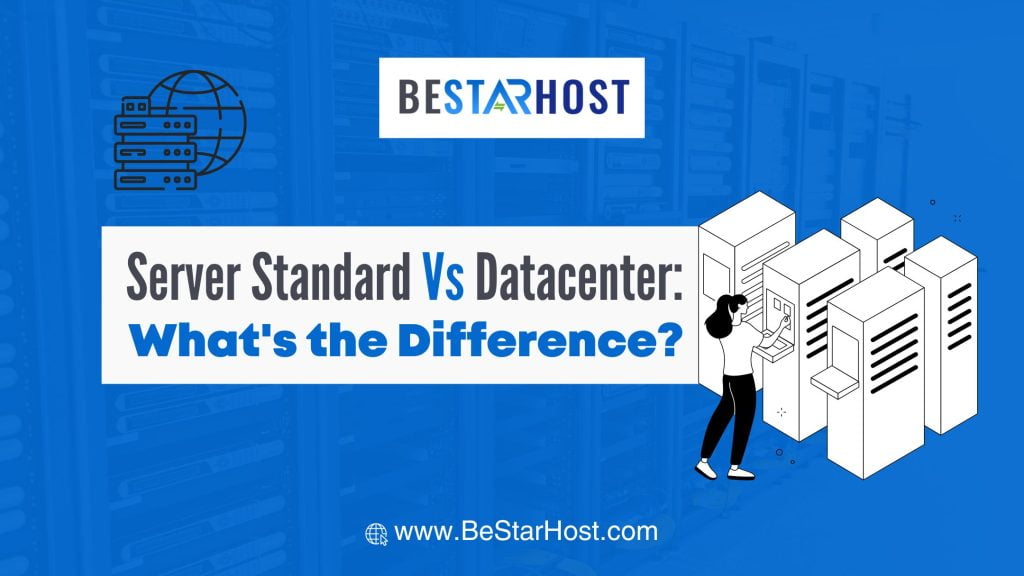
Selecting the appropriate edition between Server Standard and Datacenter is paramount for achieving optimal performance, scalability, and cost-efficiency. These two editions cater to distinct business needs, offering a spectrum of features and capabilities. By dissecting their disparities, businesses can make well-informed decisions aligning with their specific requirements. Let’s delve deeper into the nuances of Server Standard and Datacenter editions, exploring their performance, functionalities, and pricing models.
Deciphering Server Standard and Datacenter Editions
Server Standard Edition: Designed for small to medium-sized enterprises, Server Standard Edition serves as a versatile solution providing fundamental server functionalities. It includes features like file and print services, remote access, and network policy enforcement. With support for up to two virtual instances per license, Server Standard Edition offers moderate scalability for growing businesses.
Datacenter Edition: Tailored for larger enterprises and data centers, Datacenter Edition delivers high-performance, scalable server infrastructure. It boasts advanced features such as unlimited virtualization rights, Storage Spaces Direct, and Shielded Virtual Machines, catering to environments demanding maximum scalability, reliability, and virtualization capabilities.
Performance Evaluation: Server Standard vs. Datacenter
Scalability:
Server Standard Edition is designed to cater to moderate workloads and environments with limited virtualization needs. It provides a solid foundation for businesses that do not require extensive scalability. With support for up to two virtual instances per license, Server Standard Edition offers a decent level of scalability but may not be suitable for organizations with extensive virtualization requirements.
On the other hand, Datacenter Edition is tailored for environments with extensive virtualized workloads across large server clusters. Thanks to its unlimited virtualization rights, Datacenter Edition offers unparalleled scalability, making it well-suited for enterprises that need to scale their virtualized infrastructure dynamically. Whether deploying multiple virtual machines or managing complex server environments, Datacenter Edition provides the flexibility and scalability required to meet evolving business needs.
Resource Management:
Server Standard Edition provides basic resource management functionalities for efficient allocation of CPU, memory, and disk resources. While it offers essential resource management capabilities, it may lack the advanced features required to optimize storage utilization and performance in complex server environments.
Datacenter Edition, on the other hand, is equipped with advanced resource management features like Storage Spaces Direct. This technology enables organizations to pool together storage resources from multiple servers, creating a highly available and scalable storage infrastructure. By leveraging features like Storage Spaces Direct, Datacenter Edition allows businesses to optimize storage utilization, improve performance, and ensure high availability for critical data and applications.
High Availability:
In terms of high availability, Server Standard Edition supports failover clustering for basic configurations. While failover clustering provides a level of redundancy and fault tolerance, it may not offer the advanced features required to ensure robust data protection and security in complex environments.
Datacenter Edition, on the other hand, offers advanced high availability features such as Storage Replica and Shielded Virtual Machines. Storage Replica enables organizations to replicate data synchronously or asynchronously between servers or clusters, providing disaster recovery capabilities and ensuring data integrity. Shielded Virtual Machines, on the other hand, offer enhanced security by protecting virtual machines from tampering and unauthorized access.
Pricing Dynamics: Windows Server Standard vs. Datacenter
Licensing Model:
- Server Standard: Typically priced per core or per server, with licensing costs based on the number of physical cores or processors.
- Datacenter: Follows a similar pricing model but commands a higher licensing cost due to its advanced features and unlimited virtualization rights.
Total Cost of Ownership (TCO):
- Server Standard: More cost-effective for small to medium-sized deployments with limited virtualization requirements.
- Datacenter: While initial licensing costs may be higher, Datacenter Edition can offer better TCO for organizations necessitating extensive virtualization and scalability.
Conclusion
In conclusion, the choice between Server Standard and Datacenter editions hinges on factors such as workload demands, scalability prerequisites, and budget constraints. While Server Standard Edition serves as a pragmatic choice for smaller deployments, Datacenter Edition emerges as the go-to solution for large-scale virtualized environments seeking unparalleled performance and scalability. By meticulously evaluating organizational needs and weighing factors like performance, functionalities, and pricing, businesses can make astute decisions to optimize their server infrastructure effectively.
Leave a comment
You must be logged into post a comment.

One comment
Pingbacks and Tracebacks
[…] business-critical data, choosing the right server infrastructure is paramount. The decision between cluster servers and traditional servers can significantly impact your business’s scalability, reliability, and performance. As […]